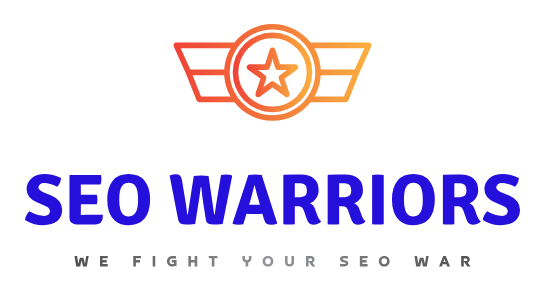Search engine optimization (SEO) is a vital strategy for improving your website’s visibility and attracting organic traffic. To achieve success in SEO, it’s important to understand and master the five pillars that form the foundation of an effective SEO strategy.

The first pillar is on-page optimization, which involves optimizing various elements within your website to improve its search engine ranking. This includes conducting keyword research, optimizing page titles and meta descriptions, and ensuring proper usage of headers and content structure.
The second pillar is off-page optimization, which focuses on building high-quality backlinks to your website from reputable sources. Backlinks are crucial for establishing your website’s authority and credibility in the eyes of search engines.
The third pillar is organic traffic, which refers to the visitors who discover and land on your website through unpaid search engine results. By implementing effective SEO strategies, you can increase the visibility of your website, attract more organic traffic, and ultimately grow your online presence.
The fourth pillar is keyword research, which involves identifying the search terms and phrases that your target audience uses to find products or services similar to yours. Understanding these keywords allows you to optimize your website’s content and make it more relevant to search engine queries.
The fifth and final pillar is backlink building. As mentioned earlier, backlinks play a crucial role in SEO. By obtaining quality backlinks from reputable websites, you enhance your website’s authority and visibility, leading to higher rankings in search engine results.
Key Takeaways:
- Mastering the five pillars of SEO is essential for online success.
- On-page optimization focuses on optimizing elements within your website.
- Off-page optimization involves building quality backlinks to your site.
- Organic traffic refers to visitors who discover your website through search engine results.
- Keyword research helps you understand the search terms used by your target audience.
- Backlink building increases your website’s authority and visibility.
Foundational SEO
Foundational SEO plays a crucial role in making your website more discoverable to search engines. By optimizing key elements such as page titles, meta descriptions, schema, image optimization, and alt text, you can improve your website’s visibility and enhance its chances of ranking higher in search results.
Page Titles
In foundational SEO, page titles are of utmost importance. They serve as a concise description of your web page and give search engines a clear understanding of its content. A well-crafted page title should accurately represent the topic of the page and incorporate relevant keywords to attract the right audience.
Meta Descriptions
Meta descriptions are HTML attributes that provide a brief summary of your web page’s content. They appear in search results and influence users’ decision to click through to your website. By crafting compelling meta descriptions that accurately reflect your page’s content, you can improve click-through rates and attract more organic traffic.
Schema
Schema markup is a structured data markup that helps search engines understand the content on your web page in a more structured manner. By implementing schema, you can provide additional context and information about your content, such as events, reviews, and product details. This enhances search engine crawlers’ understanding of your website and can lead to better visibility in search results.

Image Optimization
Image optimization involves optimizing the images on your website to improve their visibility in search results. This includes compressing image sizes, using descriptive file names, and adding alt text. Alt text is an HTML attribute that provides a textual description of an image, helping search engines understand the content and context of the image. By optimizing images, you can enhance the accessibility of your website and attract more organic traffic.
Overall, foundational SEO is the building block for a successful SEO strategy. By paying attention to page titles, meta descriptions, schema, image optimization, and alt text, you can improve your website’s visibility, attract organic traffic, and boost your search engine rankings.
Technical SEO
Technical SEO plays a crucial role in optimizing your website and server to enhance search engine crawling and indexing. By focusing on key areas such as site health, data tracking, indexing, internal link structure, site structure, redirects, and user interface/user experience (UI/UX), you can improve the overall performance and visibility of your website.
Site Health
A healthy website is essential for effective technical SEO. It ensures that your site has a solid foundation, performs well, and provides a secure user experience. Site health encompasses various aspects such as site structure, performance optimization, security measures, and technical SEO compliance. By prioritizing site health, you can enhance your website’s overall visibility and credibility.
Data Tracking
Analyzing and tracking data is integral to understanding the effectiveness of your SEO efforts. By implementing data tracking tools and techniques, you can gain valuable insights into user behavior, traffic sources, conversions, and other key metrics. This data-driven approach allows you to make informed decisions and optimize your website accordingly.
Indexing
Indexing refers to the process of storing and organizing web pages in a search engine’s database. Ensuring proper indexing is vital for search engine visibility. By following best practices for indexing, such as submitting XML sitemaps, optimizing robots.txt files, and using canonical tags, you can help search engines crawl and index your pages effectively.
Internal Link Structure
A well-structured internal link system helps search engines navigate your website and understand the relationships between different pages. By strategically linking relevant pages within your site, you can enhance user experience, facilitate the discovery of important content, and distribute authority and ranking potential across your website.
Site Structure
Having a clear and logical site structure improves both user experience and search engine visibility. It involves organizing your website’s pages into categories, subcategories, and hierarchies. A well-structured site makes it easier for users to navigate and find information, while search engines can better understand the content and context of your website.
Redirects
Redirects are essential for guiding users and search engines when a page is no longer available or has been moved. By implementing proper redirects, such as 301 redirects for permanent changes and 302 redirects for temporary changes, you can preserve the SEO value of old URLs and ensure a smooth user experience during website transitions.
UI/UX
User interface (UI) and user experience (UX) design are critical factors in creating a positive browsing experience. A well-designed website that is visually appealing, easy to navigate, and intuitive to use improves engagement, reduces bounce rate, and encourages visitors to spend more time on your site. This, in turn, can positively impact your SEO efforts by increasing user satisfaction and signal relevance to search engines.
| Technical SEO Checklist | Status |
|---|---|
| Optimize page titles and meta descriptions | Completed |
| Implement schema markup for structured data | In Progress |
| Optimize images with relevant alt text | Not Started |
| Ensure XML sitemap submission | Completed |
| Improve site speed and performance | In Progress |
Content SEO
Content SEO plays a crucial role in improving your website’s visibility and ranking on search engines. By focusing on high-quality content creation, keyword integration, optimization of headers, and using relevant anchors, you can enhance your chances of attracting organic traffic. Here’s a breakdown of each element:
Content Creation
Producing informative and engaging content is key to capturing the attention of your target audience. By creating valuable and relevant articles, blog posts, or videos, you can establish your expertise, build trust, and drive more traffic to your website.
Keyword Integration
Integrating relevant keywords into your content is essential for aligning it with the search terms your audience uses. Through thorough keyword research, you can identify the most relevant and high-performing keywords and strategically incorporate them into your content.
Headers Optimization
Optimizing headers using appropriate HTML tags (H1, H2, H3, etc.) helps search engines understand the structure and hierarchy of your content. It also makes it easier for readers to navigate and skim through your content.

Using Relevant Anchors
Using anchors within your content provides further context and information for relevant links. By linking to credible sources that support your content and adding anchor text that accurately describes the destination, you enhance the user experience and show search engines the relevance and credibility of your content.
“Content SEO involves creating engaging and informative content that aligns with the search terms used by your target audience. By integrating relevant keywords, optimizing headers, and using anchors effectively, you can boost your website’s visibility and attract organic traffic.” – SEO Expert
Business Listings and Citations SEO
Business listings and citations are crucial components of a successful SEO strategy. They refer to references to your business contact information found online, such as your name, address, and phone number (NAP). Optimizing your business listings and citations SEO can greatly improve your local search visibility and attract more customers to your business.
One of the key platforms for optimizing your business listings is the Google Business Profile. By creating an accurate and detailed profile on Google My Business, you can provide potential customers with essential information about your business, including your address, phone number, business hours, and website. This allows Google to index and display your business in local search results, increasing your online visibility and driving more traffic to your website.
Another platform to consider is Bing Places, which serves a similar purpose to Google My Business. By creating a Bing Places listing, you can ensure that your business information is visible to Bing users and improve your search rankings on Bing’s search engine.
Consistency is key when it comes to business listings and citations SEO. NAP consistency refers to the practice of keeping your business information consistent across different directories and platforms. It’s important to ensure that your business name, address, and phone number are listed accurately and uniformly wherever your business is mentioned online. This consistency helps search engines recognize and verify your business information, boosting your local search rankings and credibility.
When optimizing your business listings and citations SEO, remember to:
- Create a Google Business Profile with accurate NAP information
- Utilize Bing Places to expand your online presence
- Maintain NAP consistency across directories and platforms
Optimizing your business listings and citations SEO is a powerful way to improve your local search visibility and attract more customers to your business. By ensuring that your business information is accurate, complete, and consistent, you can boost your search rankings and establish credibility in the eyes of search engines and potential customers.
Link Building
Link building is an essential strategy in search engine optimization (SEO) that can significantly enhance your website’s authority and rankings. The process involves acquiring backlinks from other reputable websites, which serve as indications of trust and credibility in the eyes of search engines.
One effective approach to link building is leveraging competitive analysis. By conducting a thorough assessment of your competitors’ link profiles, you can gain valuable insights into the SEO landscape within your industry. This analysis allows you to identify opportunities for building quality backlinks, helping you establish a strong online presence.
Competitive analysis enables you to discover where your competitors’ backlinks are coming from and the types of content that attract valuable backlinks. Armed with this knowledge, you can create compelling content and reach out to relevant websites to request links. Building strong relationships with industry influencers and bloggers can also improve your chances of acquiring authoritative backlinks.
Implementing effective link building strategies not only increases your website’s visibility but also drives organic traffic to your site. By continuously evaluating and refining your link building efforts, you can establish a solid foundation for long-term SEO success while staying ahead of the competition.
FAQ
What are the 5 pillars of SEO?
The 5 pillars of SEO are foundational SEO, technical SEO, content SEO, business listings and citations SEO, and link building.
What is foundational SEO?
Foundational SEO focuses on optimizing page titles, meta descriptions, schema, image optimization, and alt text to make your website visible to search engines.
What is technical SEO?
Technical SEO involves optimizing your website and server to improve search engine crawling and indexing, focusing on areas such as site health, data tracking, indexing, internal link structure, site structure, redirects, and UI/UX.
What is content SEO?
Content SEO focuses on creating high-quality content that ranks well in search engines through content creation, keyword integration, headers optimization, and relevant anchors.
What is business listings and citations SEO?
Business listings and citations SEO refers to optimizing your business contact information found online, including creating a Google Business Profile, utilizing Bing Places, and maintaining NAP consistency across directories and platforms.
What is link building in SEO?
Link building is an essential aspect of SEO that involves getting other websites to link back to your site, improving your website’s authority and rankings. Competitive analysis helps identify opportunities for building quality backlinks.
